
Strange New Worlds: Star Trek’s return to humanist form
Reading Time: 9 minutes I almost didn’t watch Star Trek: Strange New Worlds, which started airing this month. I’m glad I did: it’s deservedly being called the best of the recent Treks, and there’s a lot to be said about this series as a humanist. I had reason to be reluctant. The franchise hasn’t be
I almost didn’t watch Star Trek: Strange New Worlds, which started airing this month. I’m glad I did: it’s deservedly being called the best of the recent Treks, and there’s a lot to be said about this series as a humanist.
I had reason to be reluctant. The franchise hasn’t been in great shape for some time. So let’s talk about what makes SNW a return to form, and also a promising site for deeper discourse.
(And then, if you’re so inclined, watch this column for future episode reviews!)
Obligatory Trekkie cred check
As a kid, I caught The Original Series reruns on Saturdays, carefully time-coded my VHS-taped episodes of The Next Generation and Deep Space Nine during the week, and devoured every novelization that made its way to my public library. I stuck with the franchise as it wobbled through Voyager, but checked out of Enterprise for its narrative compromises.
During the dearth of new Trek (save for J.J. Abrams being given control of a franchise he hated: a questionable directorial choice), I tinkered with an idea for a series on a medical-science ship in the wake of Romulus’s destruction. When the TV franchise rebooted, I was deeply frustrated by Discovery and Picard—so much so that I started writing my own version of what the latter could have been. (Nerdy, I know, but this was early in pandemic, when everyone was still in lockdown and losing their minds on sourdough starters. I could’ve done worse.) I wasn’t a fan of Lower Decks, though I did appreciate Seth McFarlane’s non-canonical homage to TNG, The Orville, which I feel spoofs the series more maturely.
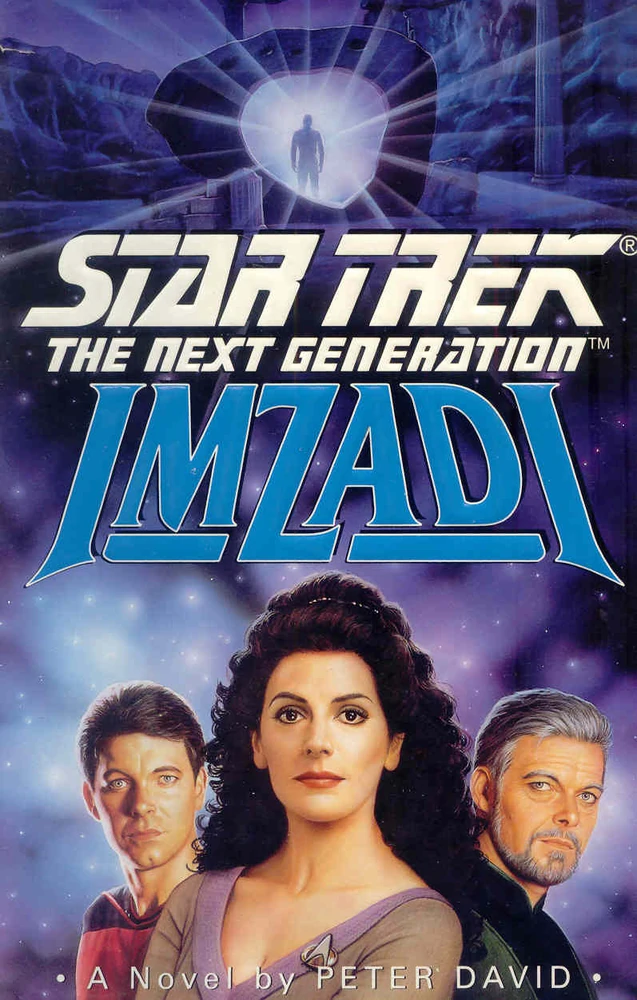
There are many kinds of Trekkie. I’m a humanist Trekkie. What stood out in this franchise for me, as I grew up with TNG and DS9 especially, was how well it served as a staging ground for holding ideas in tension. Its best crews contained a multitude of perspectives, and the knowledge that not everyone was going to agree even after a given crisis had passed. Decisions had to be made knowing that other moral peaks existed, and while recognizing that just because you wouldn’t make a given choice didn’t mean the choice itself was wrong.
In TNG, many episodes hinge on trusting a crewmate’s bizarre experiences, and close on quiet reflection after each difficult encounter. Meanwhile, DS9 routinely explored the idea that there was no such thing as living at a complete remove from complicity. The inevitability of becoming compromised could only be reckoned with: never entirely undone.
There weren’t many other sci-fi vehicles willing to sit so often with philosophical discomfort at the time, and there haven’t been many that achieved this balancing act since. (The Expanse, of course, being a rare and wonderful exception.) Even a recent rewatch of Babylon 5, a mid-’90s series that had fascinated me when I was younger for its focus on multiple species and longterm character arcs, returned me to a show far less interested in interrogating its main characters’ US-exceptionalist beliefs than I’d recalled.
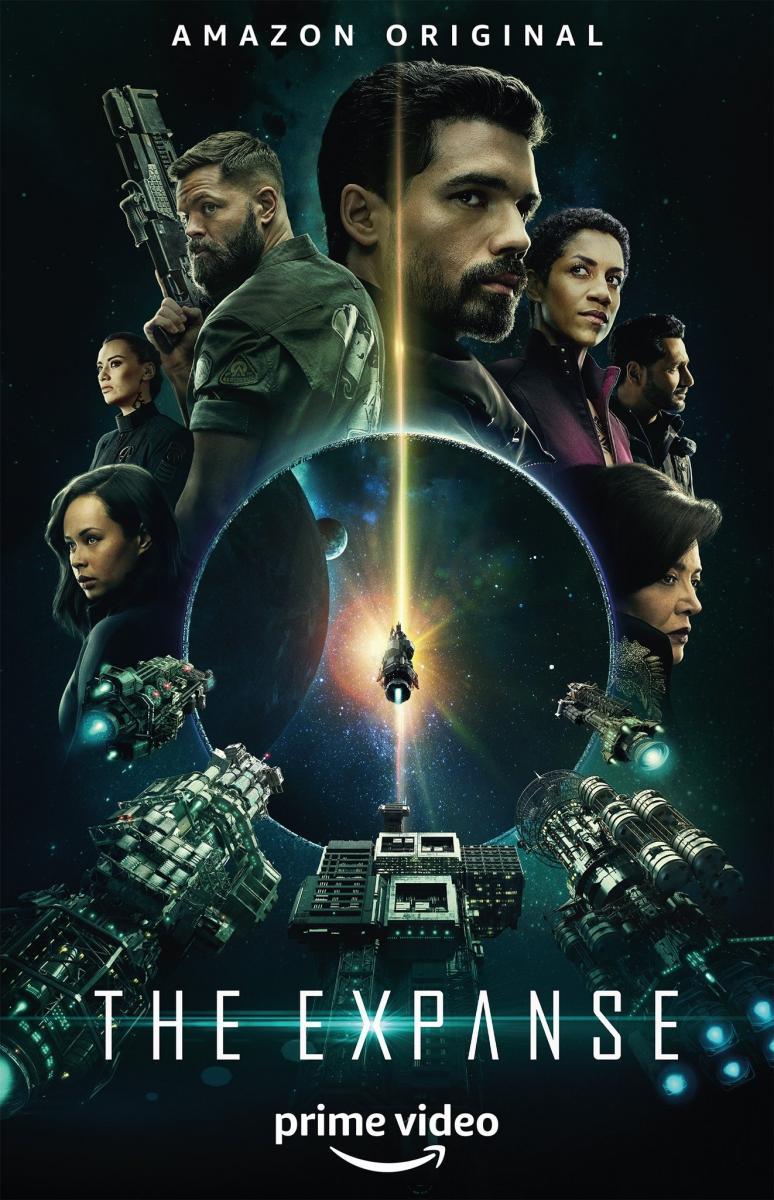
The Star Trek series I enjoy less aren’t as focused on building this humanist staging ground. They’re the ones with more episodes written so that you always know which side you’re supposed to be on, and so that all the universe’s crises primarily exist to serve a specific character’s journey. With Discovery and Picard, too, there was a desire from the outset to make a bleaker Trek. To imagine a deeply broken Starfleet. To take a franchise built on moving toward utopia and to say “yeah, but what if it was a dystopia all along?!”
Dystopic fiction abounds. It is the easiest thing to imagine How It All Goes Wrong. Much more challenging is the work of envisioning a world where imperfection doesn’t keep us from striving to do better. To its credit, then, even Discovery‘s team realized its mistake eventually, and ran hard resets on its characters and story arcs, from Season 1 to Season 2 to Season 3, to get back onto some semblance of this better track.
(Folks who enjoy Discovery like to counter that TNG also had a rough first season, but how much did the characters themselves really have to change? Data’s use of a contraction in Encounter at Farpoint had to be retconned to fit a key component of his AI backstory, and Deanna Troi got to wear a proper uniform. We can haggle over Riker’s beard.)
Star Trek: Strange New Worlds
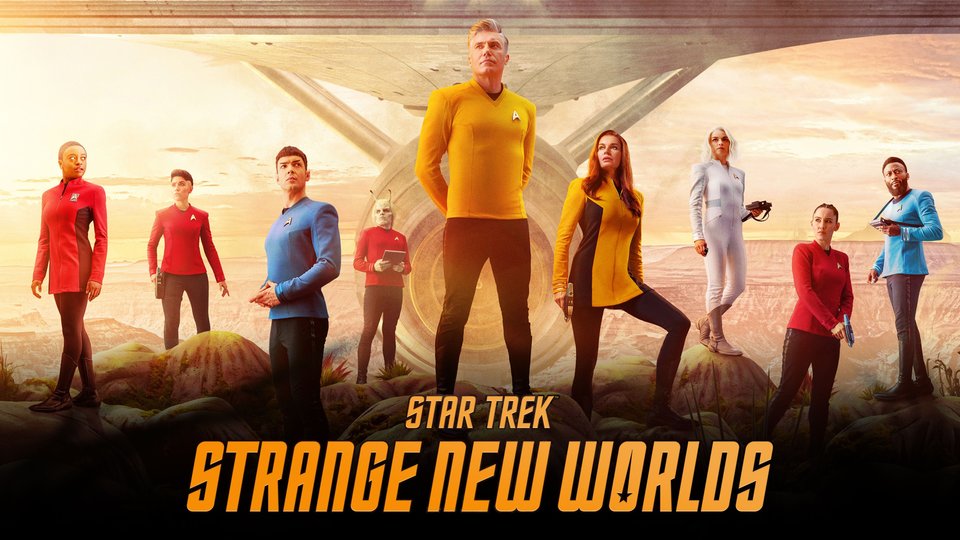
Right from the opening scene of Strange New Worlds, though, you as the viewer are invited to check your assumptions. It’s a wonderful establishing moment for the ethos of this new series, which takes place during Christopher Pike’s time in the captain’s chair of the USS Enterprise, a decade before the events of TOS.
Trekkies know full well Pike’s eventual fate—to be agonizingly maimed in the line of duty—and Discovery‘s cameo episodes allow his character to see his future on a Klingon monastic world. (With a complicated reception, because many viewers found this to be a tasteless reduction of disability to body horror.) But in SNW, producers made the terrific decision to center that foreknowledge, and to build constructively from it. Pike now knows what ultimately awaits him as he continues as captain of the Enterprise. But what does such knowledge do to a person? Does it make them more reckless, because they know they’ll survive intermediate missions? Or more risk-averse, because they’re not sure who else they might be sending to die in their stead, all along the way?
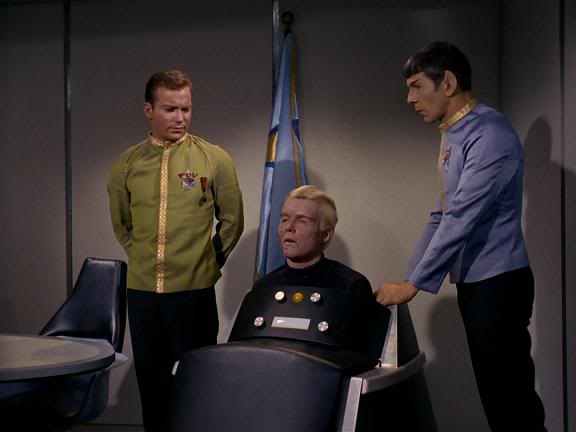
Within the first three episodes, SNW both affirms its commitment to episodic storytelling that allows different ideas to be held in tension, and also gives us a rich sense of the rest of the crew and their interactions. Granted, the show benefits from some of its characters being known to us already, but SNW in no way relies on off-screen intel to earn its sense of familiarity. We see Spock, played by Ethan Peck, leave his Vulcan fiancée to be at Pike’s side and to pursue his ambitions with Starfleet. In TOS, Nurse Christine Chapel is pretty much defined by her flirting with Spock, but in SNW, Jess Bush’s version gets to be a much more dynamic, broadly affectionate human being. Likewise, Celia Rose Gooding’s Cadet Nyota Uhura has a far more storied linguistic background that she quickly gets to put to use.
“New” Trek characters also come to us fully formed. The most original character is Babs Olusanmokun’s Dr. M’benga, a person whose time in Starfleet hasn’t resolved his struggle to provide for his family. Then there’s Rebecca Romijn’s Una Chin-Riley: an homage to the role Gene Roddenberry had originally planned for a Number One played by his wife, Majel Barrett, in TOS. Meanwhile, Bruce Horak, a low-vision actor, plays a chief engineer named Hemmer, from a blind albino subspecies of Andorian called the Aenar. And although Christina Chong plays a familiarly named La’an Noonien-Singh, she has her own backstory to complement that of her infamous ancestor, Khan. Even helmsman Erica Ortegas is not just a sly allusion to the José Ortegas in TOS‘s original pitch: played by Melissa Navia, she’s a smart, spunky trickster of a Starfleet officer in her own right.
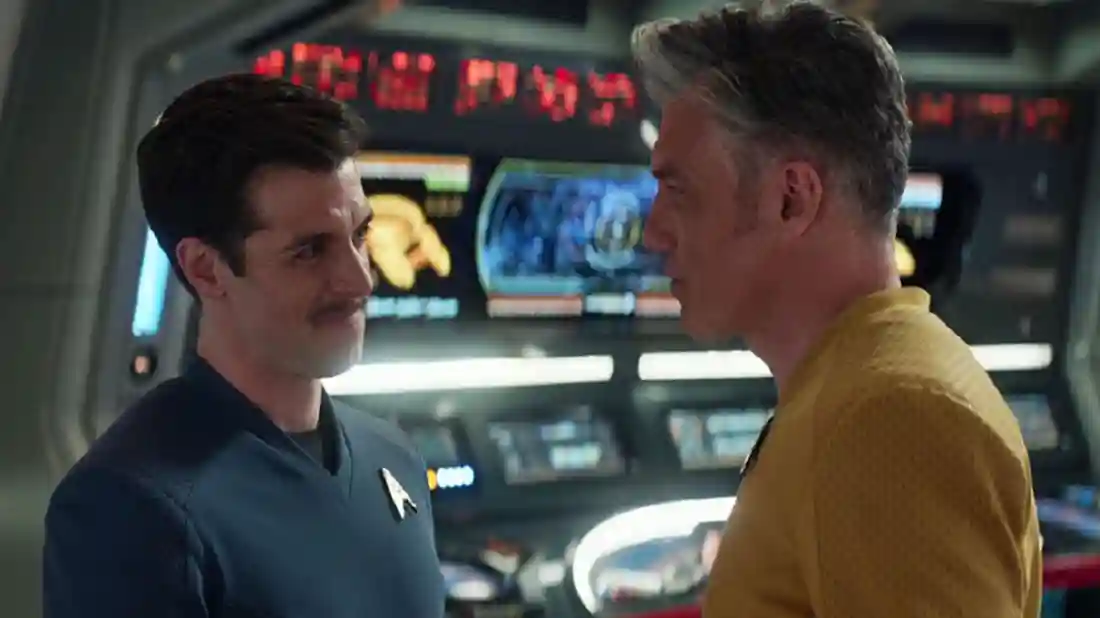
In other words: SNW, while filled with Easter eggs for we more seasoned sods in the world of Trek, is written with an express focus on earning its own narrative gravitas. It has a sincere curiosity to its story construction that immediately leaps out from the surrounding landscape of recent Star Trek series. And what does it do with that curiosity?
(Oh yes. You knew this was coming.)
It sets out on a five-year mission “[t]o explore strange new worlds. To seek out new life and new civilizations. To boldly go where no one has gone before.” To put curiosity first.
Humanism in Episodes 1, 2, and 3
Going forward, I’m going to cover each episode as it airs on Paramount+. But not as your usual TV or film review. This is going to be a “humanist” review: an assessment of how well each episode serves to build nuance and complexity around the topic of the week. How convincingly does it hold ideas in tension? What does it overlook? How much heavy-handed steering is necessary to guide the plot to reach a particular outcome? How much uncertainty remains after each crisis-of-the-week has been resolved?
For example:
Episode 1
In “Strange New Worlds”, Captain Pike returns to duty after the trauma of his future-vision, to rescue a Number One captured in the middle of a first-contact scenario gone wrong. An early version of the “Prime Directive” (so-named by the end of this episode) hangs in the balance. Pike’s choice to intervene hinges on a loophole caused by the realization that Starfleet has already accidentally disrupted the natural course of this species’ development. But the grand speech in which he seeks to resolve this conflict has a pretty gaping loophole of its own, which goes unaddressed as the episode errs toward optimism.
The premise and the complexity of the problem offer plenty of room for viewers to discuss and disagree with the solution provided, though, so: three out of four happy humans.
Episode 2
And “Children of the Comet”? Oh, it’s a classic space-religion versus secular-Starfleet issue. The Enterprise wants to nudge a comet off its collision course with a less advanced civilization, but the comet has a name, M’hanit, and a group of Shepherds who see it as a divine bringer of life and death to the cosmos, not to be disturbed. An away mission finds a means of connecting with the comet directly, and a solution presents itself, but one that also creates a deeper mystery around predestination.
It’s a neat exploration of predictive modeling’s possibilities (as Arthur C. Clarke noted, “any sufficiently advanced technology is indistinguishable from magic”), but the show misses its chance to highlight that very point, in deference to mysticism. Two and half happy humans.
Episode 3
Lastly, “Ghosts of Illyria” finds the Enterprise visiting an abandoned colony of people once banned from the Federation due to a blanket rule against genetic engineering. The crew contracts a virus that spreads aggressively aboard ship, while members of the away team are trapped in an ion storm on the surface. The solutions to both problems reveal a deeper complexity to the Federation’s blanket rule, while the reason for the virus’s spread in the first place introduces another ethical dilemma entirely.
I’ve already seen people misread this episode as “pro-eugenics”, which overlooks its core argument that reasons for genetic curation go far beyond the trauma of Terran eugenics histories. (In other words, treating all genetic changes as eugenics might be reductive.) We’re already in an era of gene therapy (for instance, moving toward curing Type-1 diabetes in humans), while still grappling with classic eugenicists. Four happy humans to this episode, for presenting an issue with no easy and universal solution.
Dystopic fiction abounds. It is the easiest thing to imagine How It All Goes Wrong. Much more challenging is the work of envisioning a world where imperfection doesn’t keep us from striving to do better.
“Hit it” or quit it?
Starting with Episode 4, which airs May 26, I’ll open a channel around each episode with a more thorough OnlySky review of how “humanist” the piece is. Opinions will certainly vary!
But that’s the point, isn’t it?
In a world that too often treats dissent as only ever adversarial, we need more narrative staging grounds that allow us to explore the multiplicity of moral peaks around key social issues. And I’m thrilled that Star Trek: Strange New Worlds offers just such a promising platform for deeper discussion. The aim in humanism, after all, is never to build a uniform point of view. Rather, it’s to advance the philosophy (and public policy) that better empowers us to look upon our shared cosmos, each from our wonderfully varied subject positions—and from them, to strive to leave it a wee bit better than we found it.
I hope you’ll all engage.
